Personalized learning
Table of Contents
It is no surprise that personalized experiences, from web browsing to online shopping and dining out, have excellent outcomes and customer responses. But, the personalization doesn’t have to stop there. This concept can also be applied to learning environments and corporate training.
Customizing the learning process and allowing learners to choose what paths they take has proven to be not only an effective way for conveying information but also to improve employee engagement. Just as every employee has different skills and personality traits so too do they have different ways of learning. Personalized learning takes this uniqueness into account to create adaptive, flexible programs.
This article explains:
- What is personalized learning?
- Why is personalized learning important?
- What are personalized learning strategies?
What is personalized learning?
Focusing on ‘personalization’ is an excellent way to understand the definition of personalized learning regarding corporate training. Personalization involves tailoring the learning outcome by changing the structure of curriculum, pedagogy, and instructional designing approaches to match the unique needs of learners. It results in a personalized learning environment catered to an individual user based on strengths and weaknesses.
So, what is personalized learning, and what does it look like? The top characteristics of personalized learning are as follows:
- Each learner follows distinct learning pathways.
- It focuses on learning rather than mandated training.
- Individual competencies and differentiation are major considerations.
- It empowers flexible learning where people can learn anywhere, anytime.
Some examples of personalized learning include:
- Providing individualized coaching or mentorships
- Allowing e-learners to test out of certain courses
- Offering a micro-learning library of educational videos for employees to use as needed
- Using artificial intelligence (AI) and machine learning algorithms to analyze an employee’s learning history, style, and preferences to suggest customized learning pathways
- Providing roleplay simulations for employees to practice skills in real-world scenarios
Implementing personalized learning in your organization puts you a step ahead of competitors. Employers relish the benefits of configured educational programs for employees that eliminate the redundant nature of one-size-fits-all content.
Personalized learning in the modern workplace
Disengaged employees are a problem many industries and companies are facing. A study by Gallup found that a disengaged workplace will increase churn, depression, and employer anxiety, reducing productivity and customer service. Personalization is an antidote for disengagement by taking employee interests, perspectives, and experiences into account and placing them at the forefront.
Additionally, offering effective learning and development (L&D) programs is also a way to combat employee disengagement and address the ever-changing needs of the workplace. Here are some factors that personalized L&D programs can address:
- The emergence of new technologies makes many employee skills redundant and outdated. There is more demand for reskilling employees to keep up with the changing market demand.
- The global economy is highly competitive. Employees must align with business goals through sustained training, including effective coaching and mentoring, to remain productive and relevant.
- Learners want to learn at their own pace, and they come with varying interests, aspirations, and learning styles. Training must address all these variations for the success of each individual learner.
- Employees today are quick to leave a company if they feel disengaged, misunderstood, or lack growth opportunities.
As a result of these developments, L&D teams must adapt and implement new learning stages to offer personalized learning experiences to ensure employees can upskill or reskill effectively. A team must also opt for measures to foster a learning culture to sustain momentum for the future.
Why is personalized learning important in the workplace?
Employees are more willing to work for organizations with a program allowing easy upskilling and career development training. But conventional multiday training sessions and canned content binders feel outdated and learners won’t find the experience valuable. It is best to create a learning experience that benefits employees and the organization to gain real outcomes.
What is personalized learning offering employees?
Employees like personalized learning programs as they allow them to take ownership of their learning process. It takes a learner-centered approach to training and allows participants to choose what to focus on based on their learning needs and interests. The reasons for embracing personalized and differentiated instruction methods come down to relevance. When learners care about the learning content and understand how it benefits them, they are more engaged and learn better.
Learners generally engage enthusiastically with educational programs that are:
- Self-directed
- Personally relevant and meaningful
- Project-based and focused on problem-solving
- Tailored to account for users’ interests
- Interactive and stimulating
- Relevant and applicable to the real world
Personalized learning fulfills these needs by:
- Giving employees a say: When they have a choice, learners choose the best learning opportunities that are relevant and meaningful to them. Because it’s a personal choice, they are more excited to participate and motivated to finish. Personalized learning ensures that individuals can work on the skills they feel are most relevant and applicable to their work and future career dreams.
- Accounting for prior experience and knowledge: Employees gain a wealth of skills, knowledge, and experience working in your organization and from past work experience. All these are great assets to the overall learning environment as employees can teach one another new things and instructors can tap into the knowledge and insights of employees. However, learners who are forced to sit through content they already know become bored and frustrated. Personalized individual learning takes prior experience and knowledge into account to allow learners to skip courses or material they already know.
- Making it more practical: The training is only valuable when it is practical and delivered as needed to avoid wasting time and resources. A personalized learning experience equips learners with skills to tackle problems and practice them in a realistic situation where it is safe to take risks and experience setbacks. As a result, they can later apply them to their jobs with more confidence and knowledge. Personalized learning also makes it easy for learners to access certain information when they need it most rather than having to sit through unnecessary content and waste time to get to the part they need.
What is personalized learning offering organizations?
The Training Industry found that organizations globally spent over $357 billion on learning programs in 2020. This high number shows how most company leaders realize the importance of employee development. However, surveys on these training initiatives show that some organizations still fail to create a suitable, successful learning model.
Creating personal learning plans with nuanced development pathways offers various benefits to organizations, such as:
- Efficiency: Relevant, timely, and tailored training eliminates time and resource wastage. Employees work and train without strain.
- Effectiveness: Training focused on learner needs is effective in immediate application and avoiding the forgetting curve.
- Engagement: Employees need to feel engaged in learning to nurture a growth mindset. Prioritizing this element can help create a learning culture that will spread throughout the organization.
Additionally, personalized learning experiences help business owners future-proof their workforces. While employees benefit from the opportunity to advance their careers, employers also won’t have to look outside the organization for skills they can develop internally. Collaborating with employees to create the best learning activities ensures the organization makes the most out of the talent and potential existing within the workplace.
Developing personalized learning strategies
So, what is personalized learning really made of? Below are some best practices and techniques for putting together a modern personalized learning program for your company.
Holistic view
Build personalized learning experiences by taking a holistic view of learning needs across the organization. Training managers can do this by examining what employees are interested in, what the company goals are, and where the industry as a whole is heading. This may require market research, leadership strategizing, and feedback from talent.
Focus on key competencies
Successful strategies for professional learning should focus on the importance of the personalized experience to the learner and not the company. Ensure the learning model offers content that enhances the learners’ core skills and emphasizes employee development. Ultimately, every training course or session should bring some value to the learner by allowing them to determine their own learning path.
Transparency
Make it clear why the training is taking place and how it will be implemented within the company. You’ll also need to be transparent about the reality of the skill or topic being discussed. An example of a transparent learning strategy is one where learners can assess their skills and competencies against their fellow teammates through gamification and healthy competition.
Guidance and support
Every learner in a personalized environment setting is unique. Some may require special consideration and accommodations. Creating a supportive space and offering necessary guidance will positively impact the program’s efficiency. Support and guidance also help companies assess a training program’s efficacy by analyzing where struggles or pitfalls occur.
Incentivize learning
What is personalized learning really worth to your employees? Employers should consider incentivizing their teams’ personalized learning to gain more benefits. Some incentives might involve money, whereas others might be social recognition. Perks like paid leave or featuring employees who complete voluntary courses on the company website can be enough to get the best results.
Get reliable solutions to your learning challenges at Docebo
When creating personalized learning strategies, it is best to move forward with confidence. One way to achieve the confidence you need and develop a strategy that works for your organization is with Docebo’s suite of learning products.
We offer a single suite for all enterprise learning needs, including customer, partner, and employee training. With our solution, you can create, manage, and deliver training while measuring its impact on your business. Visit our glossary for more relevant resources to learn more about our solutions.







